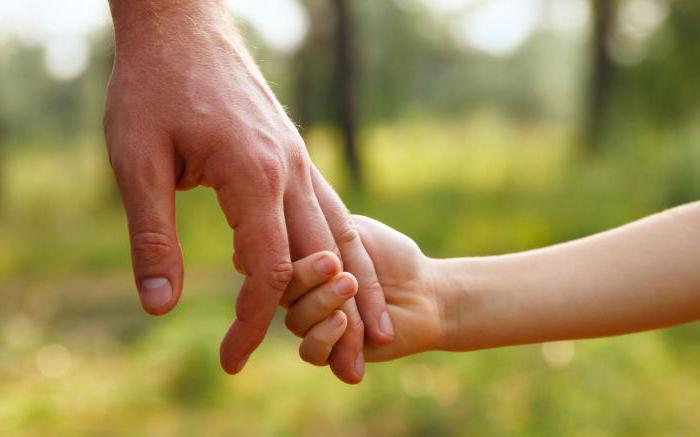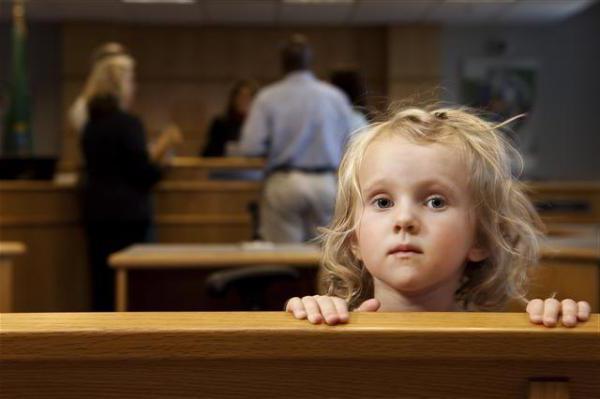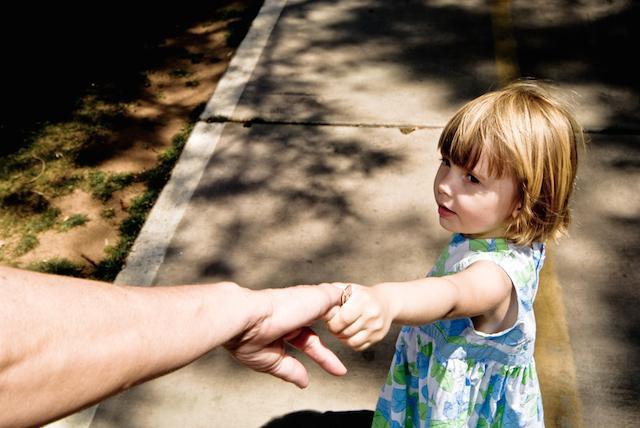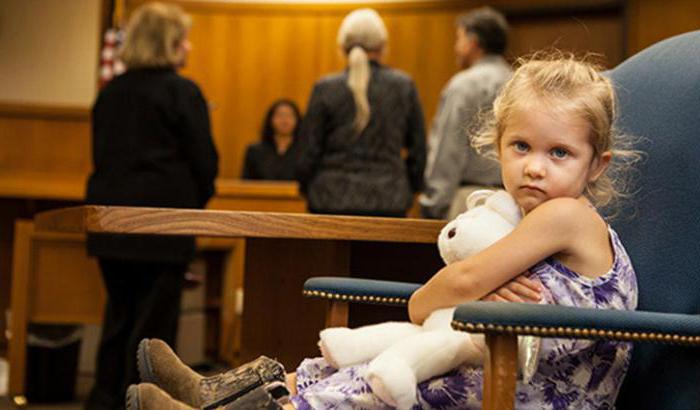What is the difference between adoption and guardianship? Sometimes this question accidentally or intentionally arose in every adult. Usually, everything related to the education of an orphan or a child left without care is merged into one concept. In fact, the legislation of the Russian Federation distinguishes several civil law forms of caring for other people's children. So all the same, what is the difference between adoption and guardianship, and what rights and obligations arise from these actions? Consider the article.
Adoption and guardianship: what is it and why is it necessary?
According to statistics, about 40% of children brought up in orphanages cannot arrange their lives. Most do not choose the best way, preferring alcohol, drugs and banditry. And this is not their fault: children who have lost families are, as a rule, not socialized and unsure of themselves. The lack of love, attention and worldly experience grows into global problems. Leaving the boarding threshold, an adult steps into the void.

Satisfactory adults can help children grow up as worthy members of society and successfully arrange their lives. Guardianship and adoption are common methods of caring for a child left without supervision. Each form vests both parties with rights and obligations over which child protection authorities monitor compliance.
Guardianship and trusteeship
Many families seriously think about raising a child from an orphanage. But not everyone decides to take this step right away. There are many difficulties associated with paperwork, the material side and the relationship of orphans with their parents. Guardianship allows you to take care of a child without tying it with family ties. What is the difference between adoption and guardianship? Limited rights and obligations related to raising a minor under 18 years of age or the moment of recognition of legal capacity.

The guardian is a defender of the interests of the child, provides him with food, education and other material and moral care. At the same time, the guardian and the person under guardianship do not have the right to dispose of each other’s property. After its completion, the legal relationship between an adult and a child ends. This is the main and main difference between guardianship and adoption.
What is the difference between guardianship and trusteeship?
Guardianship and trusteeship are essentially synonyms, but nevertheless differ from each other in some details. The difference is primarily ensured by the age of the minor (legally incompetent). For children under 14 years of age, guardianship is established. The guardian in this case has more rights and is fully responsible for the ward. This is due to the fact that, according to civil law, up to 14 years old, the interests of small citizens are represented by adults (parents or guardians). In this case, the rights of the guardian in property matters are limited to the following points:
- makes transactions on behalf of the child, with the exception of those that can only be carried out personally;
- if necessary, file a lawsuit to invalidate the transaction made by the ward independently or actually performed by the guardian to the benefit of the child of the transaction;
- bears material liability for damage caused by a child under guardianship.
Due to the fact that children under 14 are not always able to dispose of their own things and finances, the guardian is vested with the rights to rationally use the child’s material resources if actions are performed in his interests.

Guardianship is established for children over 14 years of age until adulthood or until recognition of their legal capacity. Moreover, the child has more civil rights. The minor himself disposes of his property, participates in those transactions that he is entitled to carry out without the participation of a trustee.The latter, however, bears joint liability for the actions of the ward. The rights of the guardian and trustee are generally similar and differ only in that with age the child has more civil rights.
In what cases custody (guardianship) is issued?
Guardianship and trusteeship are carried out under the supervision of guardianship authorities in compliance with the family and civil code of the Russian Federation. Registration of legal relationships of this type is carried out only by mutual agreement of the parties. For those wishing to establish custody, the requirements are:
- to be of legal age and legal capacity;
- provide health data;
- have an adequate income level and suitable housing conditions.
Upon successful completion of all procedures, documents are drawn up confirming the legal interaction of the parties. It should be remembered that the guardian acts as the person responsible for the life and development of the child. A minor is a foster child for whom some civil matters are resolved. The guardian (trustee), in fact, is an assistant and defender without the functions of a close relative.

Custody of children is usually established in cases of:
- death of relatives of the mother and (or) father;
- parent disability;
- deprivation or restriction of parental rights;
- evasion of duties to children;
- prolonged absence (illness, imprisonment, business trip).
Most often, the role of trustees is played by relatives or familiar families.
Foster family
This form is very similar to custody, but, unlike it, is carried out according to the agreement of adults with bodies representing the interests of children. It often happens that a child cannot be adopted or even set up custody. In such cases, eligible families become temporary carers for children. Upon successful completion of all procedures, an agreement is drawn up, according to which the foster parents are established.

By signing the papers, they undertake to act on the clear recommendations of the guardianship authorities and represent the interests of the child, providing him with proper care, education and development. They are assigned wages and various benefits. At the same time, foster parents do not have the exclusive right to a child. It remains with his native parents. The contract can be concluded for any period: from one month to the onset of full civil legal capacity.
Adoption
Adopting children is a long and complicated process. Future parents will have to prove more than once that they are worthy people and have everything necessary for the life and development of the child. The decision is made only through the hearing, after which all the necessary documents are drawn up. It is worth noting that the adoption of children is a priority area of law, because only on the condition of an equal family member orphans are best adapted to their future adult life.

After the court makes a decision, the rights of the parents to the child are no different from those with which they would have had for their own children. If desired, the child's data can be changed (last name, first name, middle name, date of birth). Termination of legal relations between the adopted and the parent occurs only by court decision in case of deprivation or restriction of parental rights.
Adoption procedure
If a person decides to accept a child into his family as a full relative, then the first thing to do is contact guardianship authority at the place of residence. Specialists will advise on the list and deadlines for submitting the necessary package of documents. After presenting certificates within two weeks, a decision will be made on the possibility of the applicant becoming an adoptive parent.

The next steps will be the selection of the child and pre-trial communication with him. Established contact between the parties will be an advantage in making a decision.In case of a positive outcome, the newly made parents will be engaged in paperwork for the child.
Comparison of guardianship and adoption
In order to clearly know how adoption is different from guardianship, we consider the main characteristics and legal consequences after a procedure:
| Statement | Adoptive parent | Guardian, trustee (guardianship, trusteeship) |
| Chooses a method of education according to his own convictions | Yes | Not |
| Acts under the control of guardianship and trusteeship authorities | Not | Yes |
| Is a temporary representative (educator) of the child | Not | Yes |
| He lives with his family | Yes | Yes |
| Mutual property rights | Yes | Not |
| Legal status assigned by court order | Yes | Not |
| Status is lost when a child reaches 18 years of age or civil capacity | Not | Yes |
| Secrecy of legal relationships is protected by law | Yes | Not |
| The mother (father) retains the rights to the child | Not | Yes |
| Preferential monthly security | Not | Yes |
| The need to provide a report on the condition of the child, material expenses, etc. to guardianship authorities | Not | Yes |
| In the event of a failed relationship, it’s easy to break them off. | Not | Yes |
It should be said that the adoption procedure is a more serious step than the execution of guardianship. The future parent actually recognizes the strange child as his own until the end of his life, endowing himself with all the rights and obligations of his own father (mother).
Guardianship and adoption are one of the forms of care for children left without the participation of parents. Each of them is aimed at improving the living conditions of orphans, their education and instilling in them spiritual values. It often happens that after the appointment of guardianship, families finally decide on adoption. Or, on the contrary, because of the impossibility of adoption, you have to agree at least to custody.
